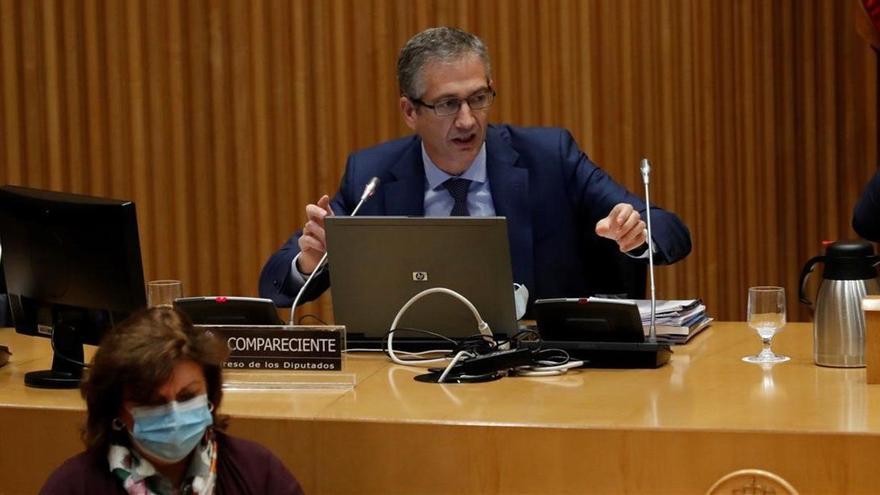The Bank of Spain may limit the mortgage credit expansion when there are signs of overexposure. This is what the circular published this Thursday in the Official State Gazette (BOE) provides, with which the adaptation of the Spanish legal system to the community directive is completed and which provides the issuing institute with tools to combat possible real estate crisis like the one that broke out in 2008, just as EL PERIÓDICO advanced, newspaper that belongs to this group, Prensa Ibérica.
The truth is that Spain is far from suffering a housing bubble since financial institutions have increased their solvency and loans are granted in a prudent manner for the most part, although property prices are beginning to show some incipient signs of overvaluation (and point to a social problem of access to housing).
Despite this relative stability, the Bank of Spain, at the head of which is Pablo Hernandez de Cos, has opted for rearm to prevent a situation like the one before 2008 from reoccurring. The standard published this Thursday launches a package of new action tools that the Government approved in 2018 and 2019 and that are derived from the regulatory changes promoted at a global and European level as a result of the previous international crisis.
The Bank of Spain may limit the maximum percentage that the mortgage can finance of the value or price of the propertye, the maximum disposable income of the client that can be used to pay the credit, and the maturity and grace periods of the loan, among other requirements. As established in the explanatory memorandum, the circular “allows the Bank of Spain to set the countercyclical buffer on the exposures of the entities in front of a certain sector, in addition to on the total exposures “, coko can do so far.
This type of measure arises from the approach macroprudencial born after the 2008 financial crisis. As stated in the circular itself, one of the main lessons learned from the previous crisis that arose in the real estate sector is that “banking regulation and supervision need to adopt a macroprudential perspective that complements the traditional microprudential approach. ”
In this sense, “to safeguard the financial stability of a country it is not enough to guarantee the safety and soundness of each financial institution individually, but it is also necessary for the financial system as a whole to be stable and resilient.” For this reason, the fundamental objective of macroprudential policy is to protect the economy from systemic risk and to also be able to control excesses in specific areas.
Future losses
The Bank of Spain requires banks to keep a specific capital piggy bank to face future losses of your mortgages or other credit or asset portfolios (sector countercyclical buffer), as well as maximum limits to the weight of these portfolios over the total loans of the entities. The body may activate one or more of these measures at the same time, individually or sectorally, and both for loans to individuals and companies.
This mechanism can be activated when, for example, it is observed a level of overvaluation of house prices “that makes the potential future corrections reduce the value of the collateral below the committed loan, when a borrower does not have a sufficiently healthy financial situation or when it is appreciated that the loan granting indicators of a significant percentage of the loan portfolio reach levels of concern from the point of view of the solvency of an entity or a group of entities“.
Exposures to specific sectors
According to the circular, “on certain occasions, exposures to specific sectors have concentrated most of the systemic risks. This was the case of the Spanish real estate sector in the past financial crisis, but there are other examples on an international scale. “Faced with this type of crisis,” activating aggregate macroprudential tools could have counterproductive effects. Specifically, if credit growth is excessive in a single sector, an increase in capital requirements for all exposures could lead institutions to further increase their exposure to that sector, since this tool does not allow the cost to be altered. relative in terms of regulatory capital of the granting of credit to the sector so that it reflects the greater systemic risk that it carries “.
On the other hand, if the measure affects a sector or a specific group of sectors, “the relative cost of credit to these sectors increases, which alters the relative returns of the different portfolios against the sector or sectors that are generating the systemic risk “.
These tools are in addition to others that have already been approved in recent years, particularly the general countercyclical capital buffer. It is about the possibility of forcing entities to reserve a solvency piggy bank not assigned to any specific productive sector when it is detected that the economy is accumulating global imbalances (in Spain it has not been activated since its creation).
– .

